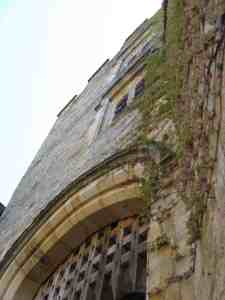Over the bank holiday weekend I went to Hever Castle in Kent, most famous as the childhood home of Anne Boleyn. I didn’t know until I got there, though, that Hever was also a home of the Astor family.
 William Waldorf Astor bought Hever Castle in 1903, and it passed to his second son John Jacob Astor, later 1st Baron Astor of Hever. The ‘Lady Astor’ of the rowing boat pictured is presumably either his wife Violet, or the wife of the 2nd Baron, Irene.
William Waldorf Astor bought Hever Castle in 1903, and it passed to his second son John Jacob Astor, later 1st Baron Astor of Hever. The ‘Lady Astor’ of the rowing boat pictured is presumably either his wife Violet, or the wife of the 2nd Baron, Irene.
I was intrigued to learn that Irene was a daughter of Field Marshal Douglas Haig, and wondered how she might be related to Lady Rhondda, whose mother Sybil was also a Haig (Sybil’s father was George Augustus Haig, 8th son of Robert Haig of Pen-Ithon, and her mother’s mother was a Haig of Blairhill). The Haig family is enormous and complicated, going back through many generations. Having spent some time scratching my head over Burke’s Peerage and Burke’s Landed Gentry, I think Sybil and Irene’s common ancestor is the James Haig, 17th Laird of Bemersyde in the early 17th century, although there could also be other more recent links!
 This is the entrance to Hever Castle pictured from the inner courtyard. Hever is a good old-fashioned castle with two moats and, as you can see, a portcullis for its defence. I can’t see a portcullis even on a castle without thinking of Parliament, as the crowned Portcullis is Parliament’s emblem (also see Sylvia Pankhurst’s brooch).
This is the entrance to Hever Castle pictured from the inner courtyard. Hever is a good old-fashioned castle with two moats and, as you can see, a portcullis for its defence. I can’t see a portcullis even on a castle without thinking of Parliament, as the crowned Portcullis is Parliament’s emblem (also see Sylvia Pankhurst’s brooch).
It’s quite apt anyway as the Astor family has excellent connections with both Houses of Parliament. Both John Jacob Astor of Hever and his elder brother Waldorf Astor were first MPs, then members of the House of Lords. And when Waldorf became a peer, the 2nd Viscount Astor, his wife Nancy was famously elected in his place and became the first woman to take her seat in the House of Commons in 1919. I’ll post more about Nancy next time.
One thought on “Lady Astor of the rowing boat”